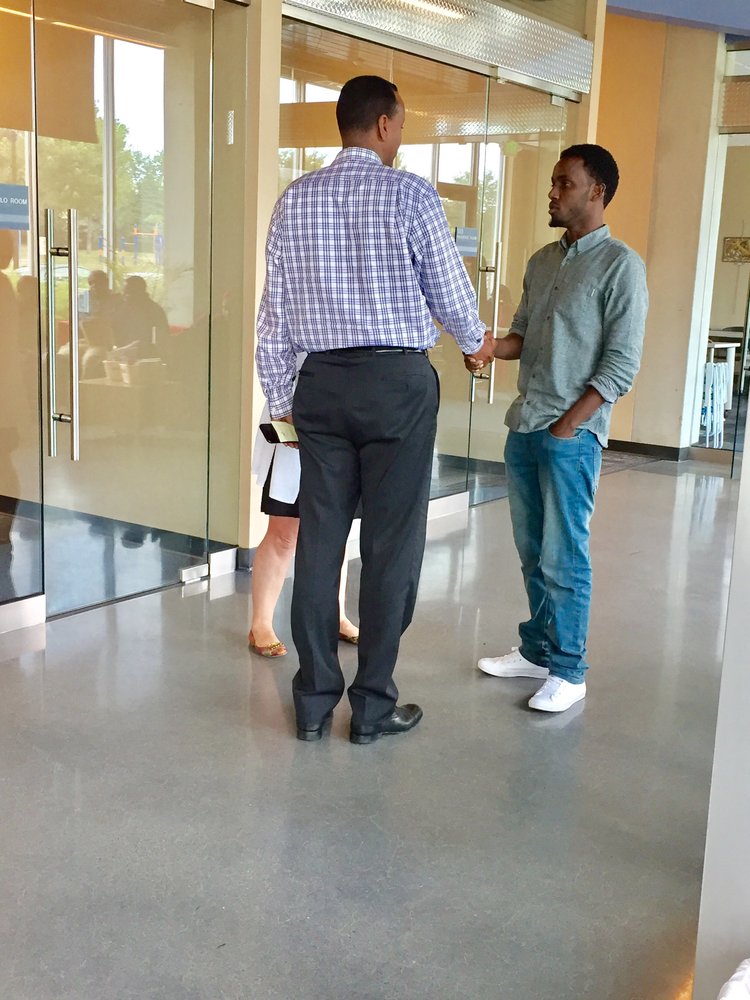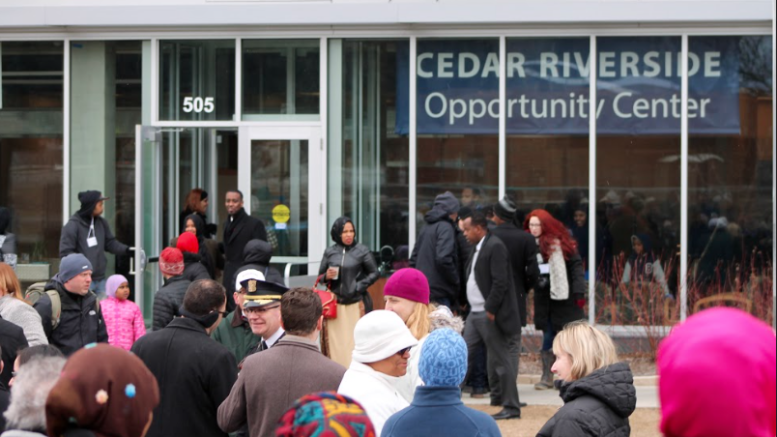When Minneapolis’ Cedar Riverside Opportunity Center opened for business last March, Mohamed Ali wasn’t totally sure how many jobseekers would come to the site for employment services, at least at first.
“Our goal for the first year was to have 150 people find jobs,” said Ali, a program director at the center. “But we exceeded that number. We had a really successful year.”
The Opportunity Center is a product of a public-private partnership that seeks to increase employment participation for residents of Cedar Riverside neighborhood, which has long boasted one of the highest unemployment rates in the state.
The partners include the city of Minneapolis, Hennepin County, EMERGE Community Development and Minneapolis Community and Technical College (MCTC). Representatives from these partners are on-site each day to provide wrap-around services for unemployed and underemployed residents, connecting them to job opportunities and career training programs.
During its first 10 months of service, the center managed to assist nearly 500 people to find jobs, according to data the agency provided to MinnPost. Of those, about 300 people landed low-skill jobs that pay $9.50-11:50 per hour; the rest were placed into jobs that pay $12 or higher.
The employers that have the most consistent presence at the Opportunity Center include Medtronic, Fairview Hospital, Andersen Windows, Target Field and Minneapolis-St. Paul International Airport. They’ve held on-site job interviews or host regular employment fairs that drew scores of jobseekers, most of them Ethiopian or Somali immigrants.
How the center works
When jobseekers arrive at the Opportunity Center, the first thing that the center’s employment coaches assist them with is creating résumés. That’s because many of the clients are new to the country and don’t have employment histories in the U.S.

Jobseekers are then placed into jobs that fit with their education, previous job experience and career interest.“We’ll look at the options they have,” Ali said. “Because if you don’t have a vehicle, we cannot send you out to Shakopee or Minnetonka. We would find jobs that are on bus lines or close to bus lines.”
Another lesson that Ali has learned since the Opportunity Center was opened for service is that clients often prefer jobs to school. For example, though the center also helps its clients to enroll in a GED program, only five people have signed up for the program so far — and no one has yet completed it.
Saeed Bihi, manager of the Opportunity Center, is optimistic that more people will utilize a new short-term health care training program, which the center plans to start soon in collaboration with the city of Minneapolis, Fairview and MCTC.
The six-week training program will be offered at MCTC to prepare participants for jobs in medical billing and coding as well as in cleaning surgical instruments, which provides might provide better wages than what many earn now.
“We are also cutting a number of required classes that aren’t necessary for the course,” Bihi said. “MCTC is willing to take out the mandatory placement test so people are not discouraged to go to the classes.”
Lessons learned
Since the Opportunity Center opened, Ali and Bihi have watched as Cedar Riverside has become a go-to place for major Twin Cities companies seeking to access ready workers.
One reason for that, the two leaders say, is because the neighborhood has many unemployed and underemployed residents, who are eager to take on new employment opportunities. The other reason, they added, is that most of the jobseekers from the area have clean criminal records.
“In some other neighborhoods, you may have people who are looking for jobs but companies are declining them because they have criminal records,” Bihi said. In Cedar Riverside neighborhood, on the other hand, “about 98 percent of the people” have a clean criminal background, Bihi said, based on the records of those who came to the center for services.
Another aspect that Ali and his team learned about their clients is that a high number of people who found employment through the Opportunity Center have remained at the same workplace for many months.
The center has tracked its clients’ retention rates throughout the time the site has been in service. Ali and his team have followed up with the individuals three months after they helped them find jobs. They found that 80 percent of the clients were still working at the same workplace.
When they tracked another group of individuals six months after they had begun working, they found that 70 percent of them were still working for the same companies that hired them through the Opportunity Center.
The center also learned that the biggest challenge that many jobseekers face is lack of transportation, though he hopes that a new initiative that’s now in the works would help address the problem.
“In 2018, we are planning to buy our own van,” he said. “We can use that van to transport jobseekers from here to their workplaces until they can afford their own transportation.”

